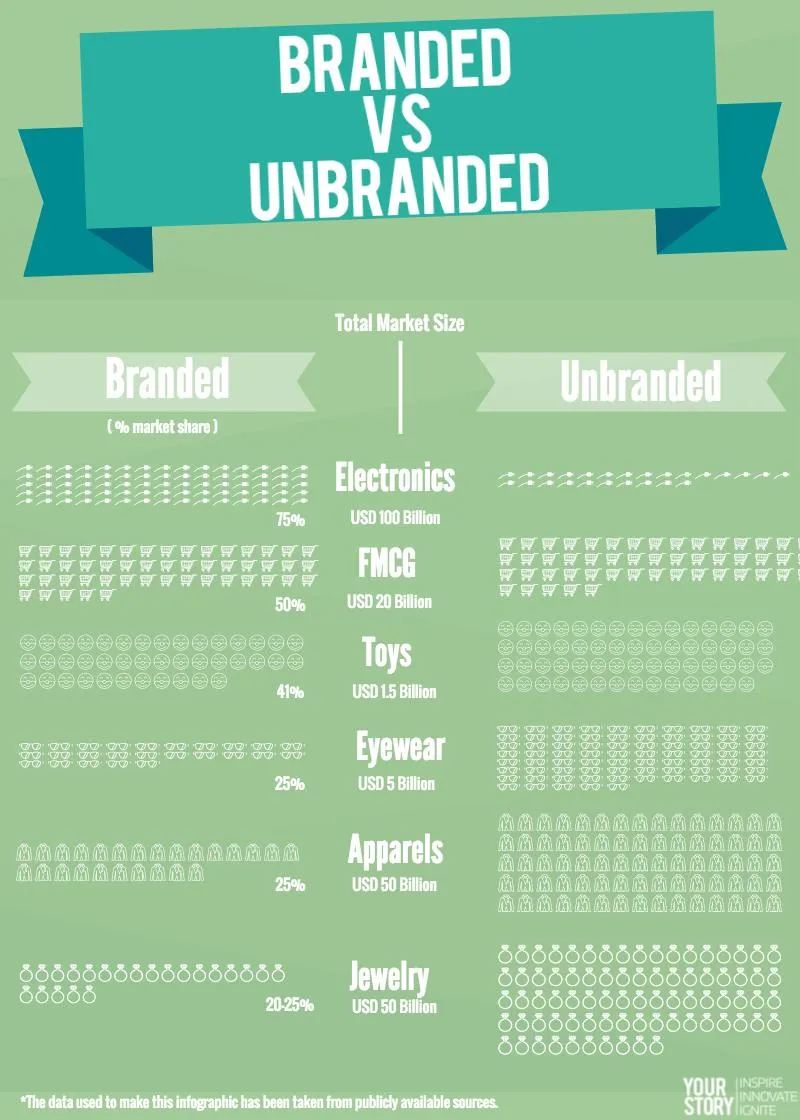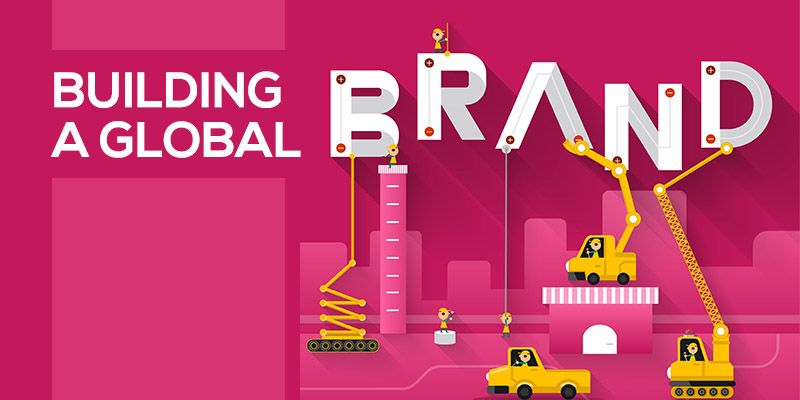Think about a brand that makes you feel good. A brand that you can rely on, a brand that is fun. Think of a brand that resonates with your personality. A brand that is exciting. A brand that spells elegance.
The names that come to my mind are -- Forrest Essentials, when I think of a brand that makes me feel good, TATA for the brand that I trust, and when I think of fun, the first brand uppermost on my mind is Disney. When I think of elegance, I do not think of a product or a company, rather I picture a personality like Gayatri Devi. Every aspect of her personality exuded elegance.
Have you ever thought why you associate a particular brand with a certain feeling?
It is essentially about what these brands promise you and how well they keep this promise time and over again. It is also about the values these brands imbibe and instil when you associate with them. It is also about the experience you expect and how consistently it is delivered.
Brands have always been an integral part of how a company is connecting with and is perceived by the people they do business with. When brands are created thoughtfully and with a purpose, they become strong brands. This allows them to often surpass the boundaries of their target segment and influence people other than their customers.
Howard Schultz, CEO of Starbucks, once said,
The success of Starbucks demonstrates the fact we have built an emotional connection with our customers. I think we have a competitive advantage over classic brands in that every day we get to touch and interact with our customers directly. Our people have done a wonderful job of knowing your drink, your name, your kids' names and what you do for a living.
When Starbucks first opened in Mumbai, there were long queues outside the store on the opening day. We are a nation obsessed with tea, and a part of the population is in love with filter coffee. Even in a country that had not tasted Starbucks coffee before, the brand connect was enough to make people queue up for the experience Starbucks brand is associated with worldwide.
This is the power of brands. We have an enormous opportunity in India to build brands and even transport it globally.

Brands that become synonymous with their products need to stay on their toes to be relevant
Have you ever thought about why someone says ‘would you like a Coke’ when they really mean ‘would you like a soft drink’?
Similarly, ‘Xerox’, the American multinational that innovated photocopiers, has today become synonymous with the process of copying. Google is one company that succeeded in making its brand name a colloquial word in people’s vocabulary. Instead of saying ‘search it online’ people say ‘google it’. The word ‘uberization’ has come to mean a whole industry (shared economy) and experience.
Brands have such power.
IBM -- as an organization and as a brand -- has reinvented itself from its first computing scales, tabulators, electric typewriters to producing powerful computers and now being on the top of complex enterprise services. The real reach and power of IBM is very strong among the CIOs of enterprises -- the decision makers behind the multi-million dollar technology purchasing decisions. The internal technology selection process has a notion among CIOs that they can’t lose their job if they pick IBM solutions.
When brands can’t keep up with the innovation or changes in the market
Many a times we say, almost unknowingly, ‘that was a Kodak moment’. What does it really mean? Eastman Kodak Company, commonly known as Kodak, taught the world to take pictures and capture moments that make memories. It was the first company to produce a hand-held camera and roll film.
However, Kodak could not reinvent itself with the fast changing digital technology and in 2012, it filed a $6.75 billion bankruptcy. The irony here is also that Kodak invented the digital camera but realised its potential a little too late.
So, can a brand survive when business dies? Yes it can, if the brand is ready to constantly evolve and reinvent itself in the changing markets.
Converse has always been associated with basketball and the shoes it made were always designed to improve the performance of the players. The brand was also popular with musicians and it stood for individuality and independence – two emotions artists connected with. Though the brand was widely popular, business wasn’t doing well. Converse filed for bankruptcy in 2001. It was bought by Nike and today it is a successful brand and a thriving business again.
Jaguar has been an aspirational brand. When Jaguar was going through turbulent times, it was bought over by the TATA group and the brand was able to rediscover itself turning around its business too. Harley Davidson is another brand that went into a severe financial crisis. It almost filed for bankruptcy and had to reinvent itself not by changing its promise of thrilling bike rides but by re-focusing on a new customer segment.
Nokia, with its branding of ‘connecting people’ and the memorable gif of two hands meeting before Nokia logo appears, is one such brand with an extremely strong consumer connection that could have been reinvented.
Can a brand have a different promise for different stakeholders?
A brand has various stakeholders. One needs to ask what is the brand priority and affinity with each of these stakeholders? What can a brand stand for so that it means something unique to buyers, suppliers, employees, and investors etc.
Some brands such as Amazon are loved by customers. It offers an unsurpassed value and convenience to them and has a great customer relationship. Amazon has always had an uneasy relationship with its suppliers and publishers and is known for having trust issues and conflict with them from time to time.
One has to think carefully about the brand value for each stakeholder and align it with the goals of their company. While creating a brand, this must be an important facet of the business.
Some great Indian brands
Who doesn’t remember the Maharaja of Air India? The Amul girl has been a household favorite brand icon for almost half a century now. We have homegrown brands that are large conglomerates today such as TATA, Birla Sons, Maruti and Godrej that Indian customers associate with. Most of these brands are in the FMCG segment.
Everyone in India knows Infosys, but almost no one is a customer of Infosys. For Indians, the Infosys brand stands for pride, business ethics, pioneering spirit and for putting India on the global business map and hence the widespread connection of the brand among people who are not even remotely connected to their business.
Often technology companies don’t think about creating a brand. However, if we look at the opportunity today in India, it is a wide canvas that these companies can paint with their unique brands.
In recent times, startups like Flipkart, Snapdeal, Ola, Quikr, and JustDial, all technology companies, are trying to re-imagine old traditional sectors and solve some hard problems in India. They have created great brands along the way.
No longer can technology companies be lethargic about creation of their brands and brand values. The notion of creating a brand is not only important but every startup should embrace and make it a priority from day one of their journey.
For consumers, brands are about a consistency of experience. And brands allow consumers to opt for that particular experience. When consumers are spoilt for choice, brands are the communication medium to talk directly to the consumers and influence where consumers finally spend their money.
The retail industry in India is expected to be USD 1 trillion industry by 2020. The organized retail penetration in India is still ~9%. The trend of private labels is fast catching up among Indian retailers across segments. Currently, private labels’ share in the retail industry is only 6%.
You might assume that electronics is a well branded sector, but the numbers show otherwise even here.
Some industries and the opportunity for building brands in those industries is very clear if we look at brand penetration.

There is indeed a big opportunity in India to create brands.
How do you build a brand when you are not in the consumer segment?
We generally think about a brand as an FMCG brand but what if the brand is not really in the FMCG or consumer segment? Can a widely popular brand be built even then?
People know and relate to the brands of Intel & Microsoft as if they were consumer brands. Core businesses of both the companies are not in the consumer segment. Both Intel and Microsoft stood for what they believed in and their brands communicated their brand messages in simple enough ways that allowed consumers to feel the connection with these brands.
As long as your brand values are clear, your brand message communicates these values and your product or services keep customers engaged and satisfied, your brand will resonate with them. It is possible to build great brands in any segment.
Some brands and the feelings associated with them
Amazon – convenience, great customer service, and fair prices
Amul – healthy, natural
Apple – design, simplicity and innovation
FabIndia – Indian-ness, artisan, tradition
Facebook – connecting the world
Google – democratization of access
Nike – determination, dreams, achievement
Starbucks – personalization, consistency
TATA – trust
While you, as a startup CEO, are striving to build a great business, it is imperative to ask yourself what and who can help you build a successful brand that can endure the test of time.
Here are a few questions to ponder over on this journey. What do you want your brand to mean? Is your promise about innovation or excellent service? What are some values that lie at the heart of your company's purpose? It is not only enough to state what your brand stands for, what is important is to do that consistently and repeatedly so that your brand endures.
Do you track the sentiments around your brand objectively through third parties? Who are your different stakeholders and what does your brand mean to each of them?
Today, the great Indian opportunity is not just about finding hacks for hard problems that entrepreneurs are trying to solve, it is also about creating strong brands that can capture market share. All entrepreneurs have this equal opportunity to create brands while building businesses. I invite you to share some of the things you are doing to create that meaningful and enduring brand.
Let’s collaborate and create great Indian brands for the world.











